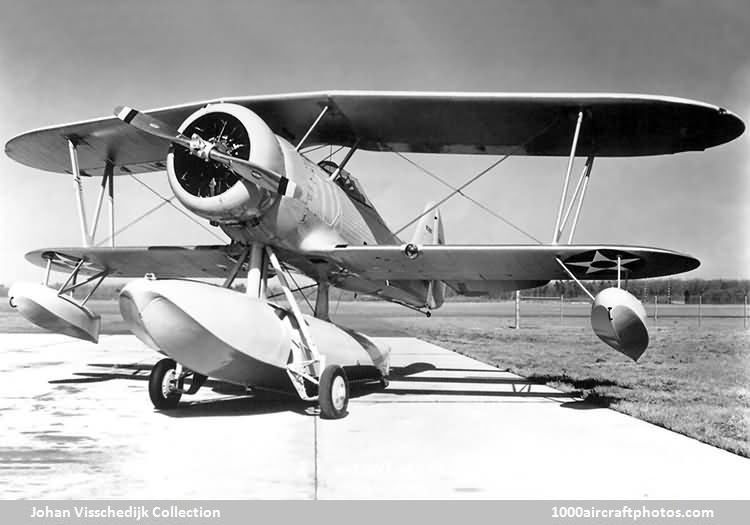02/28/2014. Remarks by Johan Visschedijk: "In the early 1930s the USN Bureau of Aeronautics reclassified cruiser and battleship-based floatplanes in two distinct types: heavier-than-air scout-observation (VSO) for cruisers and heavier-than-air observation-scout (VOS) for battleships. VSO types, scouting ahead of the cruiser, needed more range and the ability to communicate from longer distances, and for maintenance and protection in rough seas, they also needed to fit within the confines of existing cruiser hangars.
Requirements for new VSO types were circulated in mid-1933 to Curtiss, Douglas, and Vought, with the expectation that prototypes would be delivered for trials in early 1934. In addition to biplane folding wings and performance factors, the specification called for each prototype to be equipped with a Pratt & Whitney R-1340 Wasp radial power plant and an amphibious center float.
The sole Vought prototype was converted from an O3U-6 Corsair and was first flown in June 1934. In the same month the fly-off commenced against the Douglas XO2D-1 and the Curtiss XO3C-1, the latter eventually being selected by the USN."

